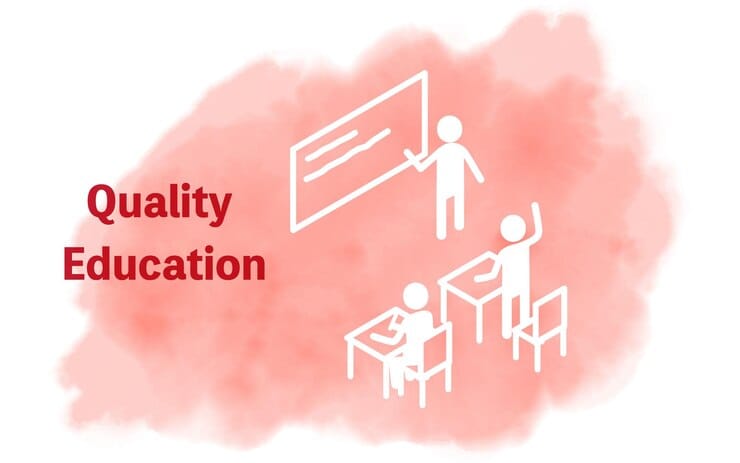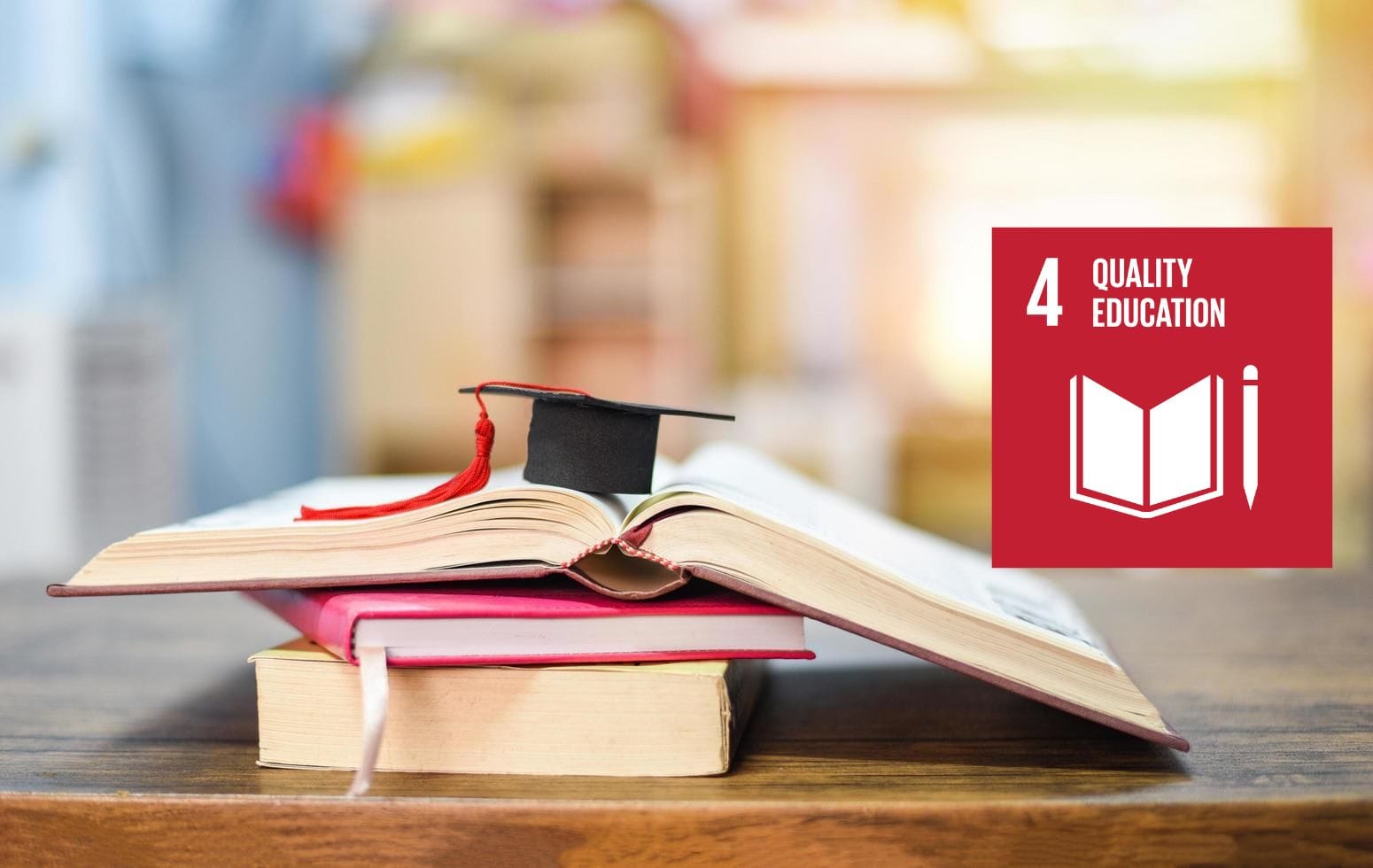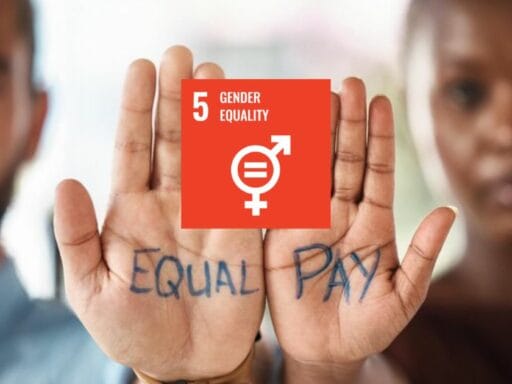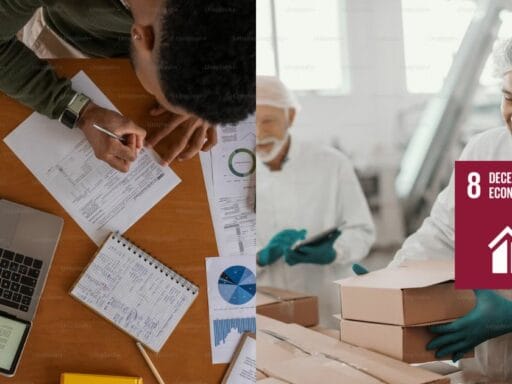SDG Goal 4: Quality. Education is one of the UN’s Sustainable Development Goals (SDGs), which aim to promote inclusive and equitable quality education and lifelong learning opportunities for all. Education is an effective instrument for alleviating poverty and inequality, boosting economic growth, and increasing people’s general well-being. Without quality education, fulfilling other SDGs becomes increasingly difficult, making SDG 4 a critical pillar of sustainable global development.
The United Nations underlines that access to decent education is a human right. SDG 4 aims to guarantee that all children, youth, and adults have equal access to education, regardless of their background or financial condition. The purpose is to foster lifelong learning via early childhood education, primary and secondary schools, vocational training, and adult education. By 2030, SDG Goal 4 aims to ensure that all children get free, equitable, and high-quality primary and secondary education. This goal emphasizes disadvantaged populations such as females and children with disabilities. The aim also emphasizes the importance of vocational education in preparing students for good labor and employment. It supports sustainable development, human rights, gender equality, and peace.
The Importance of SDG Goal 4
Education is the cornerstone of sustainable development, allowing individuals to make significant contributions to society and the economy. Quality education not only provides individuals with reading and numeracy abilities, but it also teaches them critical thinking, problem solving, and social-emotional skills. Ensuring adequate education for all contributes to poverty reduction, improved health outcomes, and gender equality. It also stimulates economic growth by encouraging innovation, entrepreneurship, and a well-educated labor force. Furthermore, SDG 4 contributes to other global initiatives by promoting peaceful and inclusive communities, decreasing inequities, and enabling individuals to make informed decisions.
Targets of SDG Goal 4
To achieve SDG Goal 4, the United Nations has outlined specific targets, including:
- Universal Primary and Secondary Education: By 2030, ensure all children complete free, equitable, and quality primary and secondary education.
- Early Childhood Development: By 2030, ensure access to quality early childhood development, care, and pre-primary education.
- Equal Access to Technical, Vocational, and Higher Education: By 2030, ensure equal access for all men and women to affordable and quality technical, vocational, and tertiary education.
- Relevant Skills for Employment: By 2030, increase the number of youth and adults with relevant skills for employment, decent jobs, and entrepreneurship.
- Gender Equality and Inclusion: Eliminate gender disparities in education and ensure equal access to education for vulnerable populations. This includes persons with disabilities and indigenous peoples.
- Universal Literacy and Numeracy: Ensure that all youth and adults achieve literacy and numeracy by 2030.

Challenges in Achieving SDG Goal 4
Achieving SDG Goal 4 faces significant challenges. Some of the major obstacles include:
1- Access to Education
One of the key problems in reaching SDG Goal 4 is ensuring that all children, particularly those from disadvantaged and marginalized groups, have access to excellent education. In many underdeveloped nations, children confront obstacles to schooling such as:
Poverty: Families struggling to meet basic necessities may be unable to cover school-related fees such as uniforms, materials, or transportation.
Geographical barriers: In rural or isolated places, schools may be distant from home, making everyday attendance challenging. In certain circumstances, there may be insufficient schools, denying children access to formal education.
Conflict zones: Due to violence and instability, millions of children in conflict-affected countries are absent from school, disrupting educational institutions.
Disability: Mainstream education frequently excludes children with disabilities due to a lack of accessible infrastructure, qualified instructors, and specialized resources.
Addressing these hurdles necessitates major investment in infrastructure, inclusive education, and tailored policies to reach the most marginalized.
2- Quality of Education
Ensuring access to education is simply one part; achieving SDG Goal 4’s objectives also requires high-quality education. In many schools across the world, children face the difficulty of low educational quality, which various factors can link to:
Unqualified instructors: In many countries, a dearth of trained instructors means inexperienced individuals administer classrooms, directly influencing students’ learning outcomes.
Outdated curriculum: Some educational institutions utilize curriculum that are out of date and do not prepare students for the modern workforce, such as critical thinking, problem solving, and digital literacy.
Poor infrastructure: Inadequate school buildings, overcrowded classrooms, and a scarcity of essential resources such as textbooks and teaching materials all impede effective learning.
Improving educational quality requires investment in teacher training, curriculum updates, and better learning environments that promote engagement and innovation.
3- Gender Inequality in Education
While there has been progress toward gender equality in education, considerable gender discrepancies persist, particularly in developing nations. Many girls, especially those in rural or conflict-affected areas, are denied the opportunity to attend school because:
Cultural norms: In certain communities, cultural attitudes and practices hinder or even prohibit girls from seeking an education since they are supposed to prioritize home obligations.
Early marriage: In certain places, girls are married off at an early age, restricting their education and future chances.
Gender-based abuse: Girls are frequently subjected to abuse and harassment both on their approach to and within schools, contributing to greater dropout rates.
To address gender disparity, governments and organizations must establish policies that safeguard girls’ access to an education, such as secure learning spaces, anti-discrimination legislation, and initiatives to change cultural conceptions about gender and education.
4- Teacher Shortages
To meet SDG Goal 4, the UNESCO Institute for Statistics predicts that approximately 69 million teachers would need to be hired by 2030. This scarcity, especially in Sub-Saharan Africa and Southern Asia, is one of the most severe issues in the education industry. The shortage of trained teachers has an influence on learning results, class sizes, and overall educational quality.
Inadequate training: In many areas, instructors do not obtain proper pre-service and in-service training, compromising the quality of education.
Low pay and poor working conditions: Teachers in many nations are underpaid, overworked, and without enough support, resulting in low morale and high turnover rates.
High student-to-teacher ratios: Overcrowded classrooms make it difficult for instructors to offer individual attention to pupils, lowering instructional efficacy.
To address the teacher shortage, significant investment is required in teacher education, professional development, and policies that recruit and retain bright educators.
5- Digital Divide
The digital gap has been a more significant issue in recent years, particularly in light of the COVID-19 epidemic, which has increased the need for online learning. While digital technologies have the potential to improve learning, millions of students lack access to the required resources, such as:
Internet access: Many low-income and rural communities lack dependable internet connections, restricting students’ ability to access online educational materials and engage in remote learning.
Devices: Many households cannot afford the laptops, tablets, or smartphones needed for online education, aggravating disparities.
Digital literacy: Even in regions where digital resources are available, a lack of digital literacy among students and teachers can impede successful learning.
Bridging the digital gap entails not just increasing access to technology, but also teaching instructors and students digital literacy, ensuring that online education is inclusive and accessible to everyone.
6- Inadequate Funding
Achieving SDG Goal 4 necessitates considerable financial commitment, but many countries, particularly low-income ones, struggle to provide adequate funding for education. Education frequently competes with other vital requirements such as healthcare, infrastructure, and defense in national budgets.
Government budget constraints: In many underdeveloped nations, governments have limited resources, and education is frequently underfunded. This leads to inadequate infrastructure, teacher shortages, and a scarcity of vital instructional supplies.
International aid: While international aid is critical for helping education in low-income countries, shifting donor goals and money can lead to uneven success.
Business sector engagement: There is an increasing demand for collaboration between governments and the business sector to overcome financial shortfalls. Private corporations and non-governmental organizations (NGOs) can contribute financial assistance and resources to strengthen education systems.
To address this issue, governments must prioritize education in national budgets and investigate novel finance alternatives that combine both public and private sector partnership.
7. Conflict and Crisis
Armed wars, natural catastrophes, and other crises have catastrophic effects on education. Schools are frequently damaged in conflict zones, and students are relocated, making continued access to education difficult. For example:
School closures: In conflict zones, schools are frequently compelled to close for lengthy periods of time. This disruption affects students’ education and contributes to high dropout rates.
Displacement: Refugees and internally displaced children suffer severe challenges to schooling owing to limited resources. They also face difficulties due to language problems and an unfamiliar environment.
Psychosocial impact: Children in conflict zones are exposed to trauma and stress, which can impair their capacity to concentrate and study well.
Humanitarian groups and governments must emphasize education in catastrophes. They should provide temporary schools, teacher training, and learning tools to guarantee that education continues even during times of disaster.
Case Study: Finland’s Education System
Finland is widely considered as having one of the world’s top educational systems, and it serves as an example of excellence for SDG Goal 4: Quality Education. Finland’s education system promotes equity, innovation, and extensive teacher preparation, with no standardized testing or school rankings. Finland’s prosperity may be attributed to several key elements, including:
- Equal Access to Education: All students, regardless of background, have access to high-quality instruction. The government pays tuition, guaranteeing that education is free from pre-primary to tertiary levels.
- Highly Qualified Teachers: Finnish teachers go through extensive training and must have at least a master’s degree. Teachers are highly recognized and trusted, providing them the freedom to innovate in the classroom.
- Focus on Well-Being: Finland’s education system focuses on student well-being by lowering academic stress. It creates a friendly environment that encourages learning at a comfortable pace.
- Emphasis on Lifelong Learning: Finland promotes lifelong learning by offering adult education programs. These programs assist people in constantly enhancing their abilities for job and personal growth.
- Finland’s success indicates how investing in teachers, student well-being, and equal access to resources can greatly improve educational performance.
Practical Solutions for Achieving SDG Goal 4
Here are some practical ideas that governments, organizations, and educators may undertake to assist accomplish SDG #4:
- Expand Access to Free Education: Governments should invest in making education free at all levels. This ensures that financial barriers do not keep students from receiving an education.
- Strengthen Teacher Training: Investing in teacher training programs would increase educational quality. It would also guarantee that pupils receive appropriate teaching from trained educators.
- Promote Early Childhood Education: Early childhood education programs lay the groundwork for lifelong learning. Therefore, it is critical to invest in pre-primary education.
- Close the Digital Divide: Providing low-cost internet connection and digital gadgets can improve learning chances, especially in distant or low-income communities.
- Ensure Gender Parity in Education: Governments should implement policies that address the barriers preventing girls and marginalized groups from accessing education.
FAQs
🤔 What is SDG Goal 4?
Answer: SDG Goal 4 aims to ensure inclusive and equitable quality education and promote lifelong learning opportunities for all.
🤔 Why is quality education important for sustainable development?
Answer: Quality education fosters critical thinking, innovation, and skill development, which are essential for economic growth, poverty reduction, and societal well-being.
🤔 What are the targets of SDG Goal 4?
Answer: Targets include universal primary and secondary education, vocational training, gender equality in education, and lifelong learning opportunities.
🤔 What challenges hinder the achievement of SDG Goal 4?
Answer: Challenges include inequality in access to education, teacher shortages, poor infrastructure, and the digital divide.
🤔 How can countries achieve SDG Goal 4?
Answer: Countries can achieve SDG Goal 4 by investing in teacher training and improving school infrastructure. They can also promote gender equality and expand digital access for education.
Conclusion
SDG Goal 4: Quality education is critical to global development and long-term success. By ensuring that all people have access to quality education and lifelong learning opportunities, the globe can eliminate poverty. This also promotes economic growth and helps build more inclusive communities. To address issues including access inequities, teacher shortages, and the digital divide, governments, educators, and organizations must work together to achieve SDG Goal 4. Quality education empowers individuals and changes communities. It is one of the most effective instruments for advancing the 2030 Agenda for Sustainable Development. With ongoing investment and innovation, SDG Goal 4 may become a reality for everyone to create better equal society.








